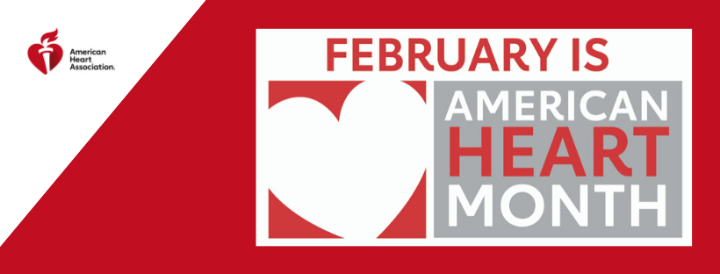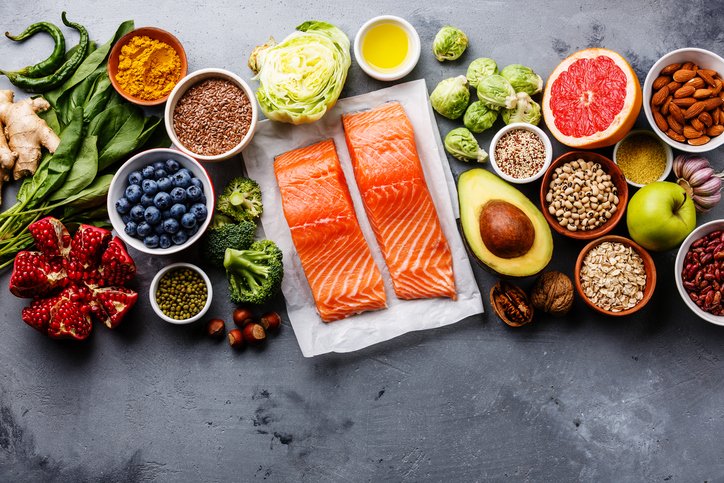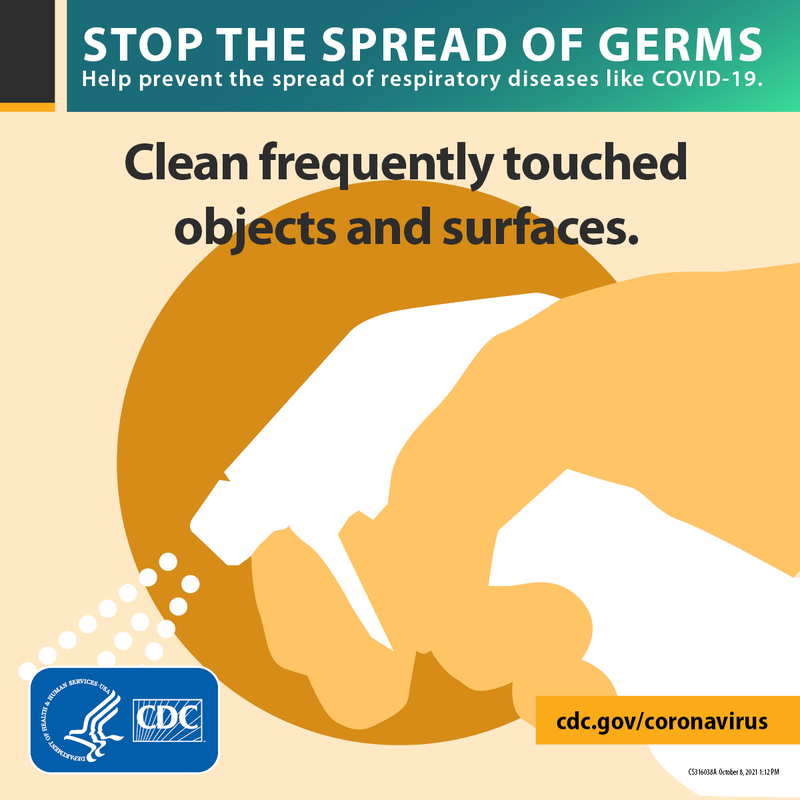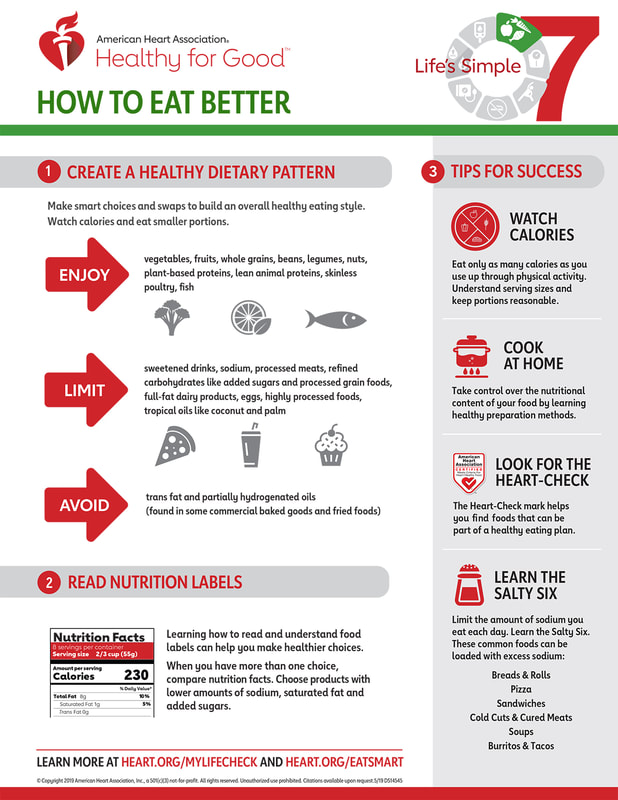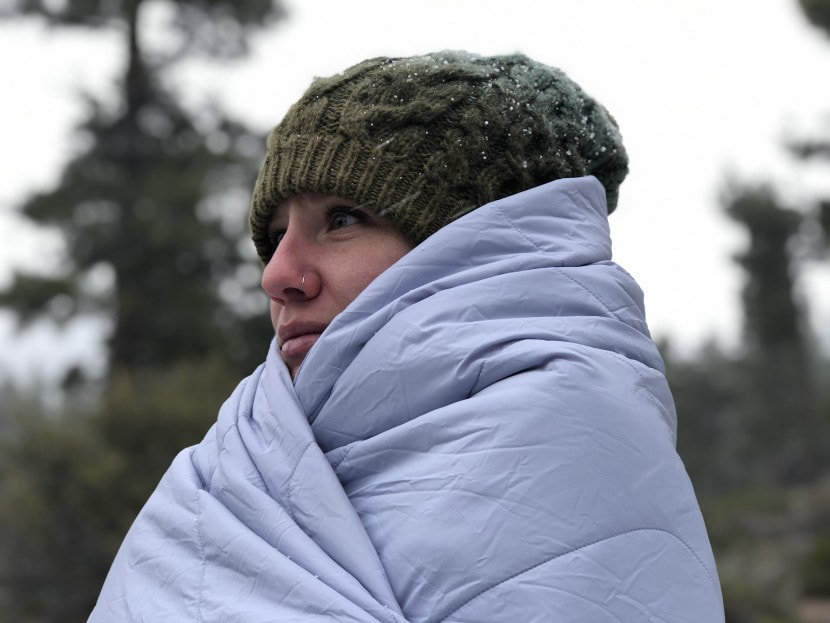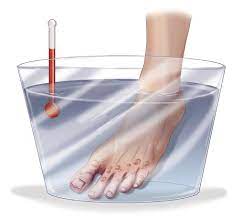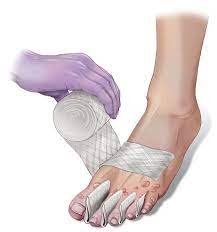|
The Nation Goes Red in February Monday, February 1 — Monday, March 1 The first Friday each February, American Heart Month, the nation comes together, igniting a wave of red from coast to coast. From landmarks to news anchors, neighborhoods to online communities; this annual groundswell unites millions of people for a common goal: the eradication of heart disease and stroke. https://newsroom.heart.org/events/february-american-heart-month-go-red-for-women
0 Comments
Recipes for a Heart-Healthy LifestyleA heart-healthy lifestyle starts with healthy food choices. Eating a variety of foods rich in nutrients like potassium, calcium, magnesium, fiber, and protein and lower in sodium and saturated fat can help keep your blood pressure low and protect against heart disease and stroke.
Eating heart-healthy doesn’t have to be boring or bland. In fact, it can be easy and delicious! Spring is the perfect season to load up on more fruits and vegetables. Keep your meals fresh and flavorful with these inspired, heart-healthy dishes for every occasion. Recipes with an asterisk are low sodium, which means they have 140 mg of sodium or less per serving. Try these affordable, delicious recipes and helpful healthy eating resources from our partners at the U.S. Department of Agriculture (USDA); the National Heart, Lung, and Blood Institute (NHLBI); and the American Heart Association (AHA). Healthy Eating Resources
Eating heart-healthy doesn’t have to be boring or bland. In fact, it can be easy and delicious! Spring is the perfect season to load up on more fruits and vegetables. Keep your meals fresh and flavorful with these inspired, heart-healthy dishes for every occasion. Recipes with an asterisk are low sodium, which means they have 140 mg of sodium or less per serving. Try these affordable, delicious recipes and helpful healthy eating resources from our partners at the U.S. Department of Agriculture (USDA); the National Heart, Lung, and Blood Institute (NHLBI); and the American Heart Association (AHA). Healthy Eating Resources
Make a Meal Plan. The Dietary Approaches to Stop Hypertension (DASH) eating plan includes foods that are low in sodium, which can increase blood pressure, and high in potassium, magnesium, and calcium, which help lower blood pressure. Find sample meal plans at these links:
The Dietary Approaches to Stop Hypertension (DASH) eating plan includes foods that are low in sodium, which can increase blood pressure, and high in potassium, magnesium, and calcium, which help lower blood pressure. Find sample meal plans at these links:
Page last reviewed: October 10, 2019 Content source: Division for Heart Disease and Stroke Prevention 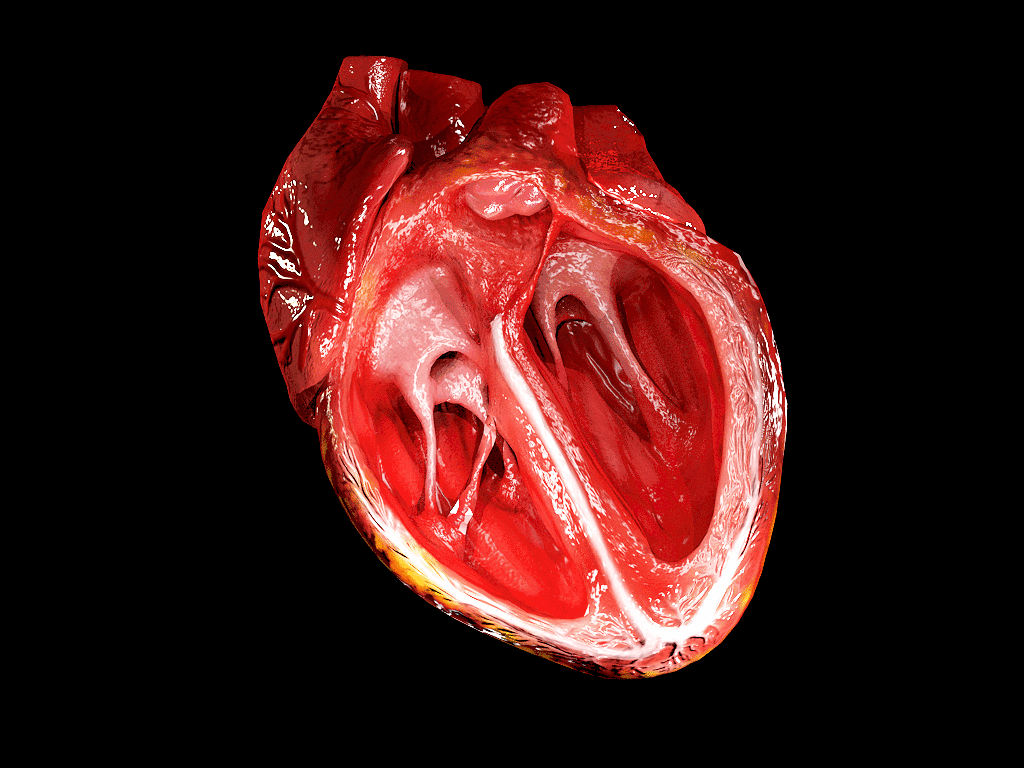 11 Fascinating Blood Flow Facts from the Human Body By Susan Eymann, MS | 09 Dec 2015 The circulatory system in the human body stretches 66,000 miles, more than two and a half times the circumference of the Earth.
According to Harvard Medical School a regular whirl on the dance floor may lower your odds of dying from heart disease, a new study suggests.
The study included 48,000 people in the United Kingdom who answered questions about their dancing and walking habits over the past month. All were 40 years and older with no history of heart disease and agreed to be linked to the National Death Registry. After an average follow-up of nearly 10 years, researchers found that moderate-intensity dancing was linked to a lower risk of cardiovascular death. This benefit was slightly better than that seen with walking, and possibly stronger in women than men. https://www.health.harvard.edu/heart-health/dance-your-way-to-better-heart-health (Be safe. Do not attempt moves that are unsafe. Consult your physician before exercise). 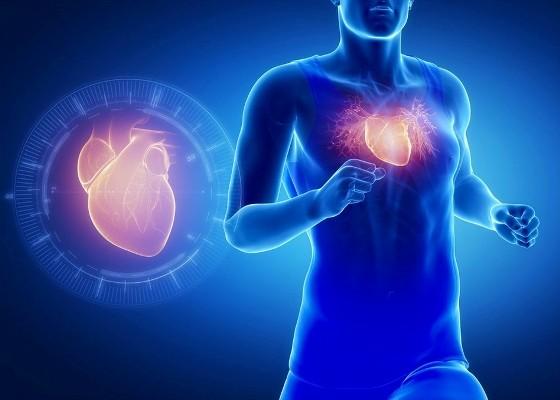 U.S. commemorates 57th consecutive American Heart Month in February It's February – American Heart Month – a time when the nation spotlights heart disease, the No. 1 killer of Americans. President Lyndon B. Johnson, among the millions of people in the country who'd had heart attacks, issued the first proclamation in 1964. Since then, U.S. presidents have annually declared February American Heart Month. Throughout the month, the American Heart Association's "Heart to Heart: Why Losing One Woman Is Too Many" campaign will raise awareness about how 1 in 3 women are diagnosed with heart disease annually. The first Friday of American Heart Month, Feb. 5, is also National Wear Red Day as part of the AHA's Go Red for Women initiative. Coast to coast, landmarks, news anchors and neighborhoods go red to raise awareness and support for the fight against heart disease. For more information on the event and other activities during the month, visit goredforwomen.org. This year, the federally designated event is even more important due to the impact of the coronavirus on the public's heart health, including potential harmful effects on the heart and vascular system, according to recent research. Also, during the COVID-19 pandemic, many people have delayed or avoided going to hospitals for heart attacks and strokes – netting poorer outcomes and prompting the AHA to create "Don't Die of Doubt," a national awareness campaign that reminds people that hospitals are the safest place to go when you have symptoms. While in lockdown, more people have engaged in unhealthy lifestyle behaviors, such as eating poorly, drinking more alcohol and limiting physical activity, that can contribute to heart disease. Meanwhile, heart disease continues to be the greatest health threat to Americans and is still the leading cause of death worldwide, according to the AHA's Heart Disease and Stroke Statistics – 2021 Update. The update, published in the association's flagship journal Circulation, reports that nearly 18.6 million people across the globe died of cardiovascular disease in 2019, the latest year for which worldwide statistics are calculated. That's a 17.1% increase over the past decade. And 523.2 million cases of cardiovascular disease were reported in 2019, a 26.6% increase over 2010. During American Heart Month, the AHA and other organizations reinforce the importance of heart health, the need for more research and efforts to ensure that millions of people live longer and healthier. In most cases, heart disease is preventable when people adopt a healthy lifestyle, which includes not smoking, maintaining a healthy weight, controlling blood sugar and cholesterol, treating high blood pressure, getting at least 150 minutes of moderate-intensity physical activity a week and getting regular checkups (American Heart Association, 2021). American Heart Association - check out the article by AHA with the below link. https://www.heart.org/en/around-the-aha/february-is-american-heart-month. FROSTBITE Cold-Related Emergencies Frostbite and hypothermia are two types of cold related emergencies. Frostbite is the freezing of body parts exposed to the cold. Severity depends on the air temperature, length of exposure and the wind. Frostbite can result in the loss of fingers, hands, arms, toes, feet and legs. What to Look For The signals of frostbite include lack of feeling in the affected area, swelling and skin that appears waxy, is cold to the touch or is discolored (flushed, white, yellow or blue). In more serious cases, blisters may form and the affected part may turn black and show signs of deep tissue damage. When to Call 9-1-1 Call 9-1-1 or the local emergency number for more serious frostbite or seek emergency medical help as soon as possible. What to Do Until Help Arrives To care for frostbite, handle the area gently. Remove wet clothing and jewelry, if possible, from the affected area. Never rub a frostbitten area. Rubbing causes further damage to soft tissues. Do not attempt to rewarm the frostbitten area if there is a chance that it might refreeze or if you are close to a medical facility. For minor frostbite, rapidly rewarm the affected part using skin-to-skin contact such as with a warm hand. If fingers or toes are frostbitten, place cotton or gauze between them. Do not break any blisters. Take precautions to prevent hypothermia. Monitor the person’s condition, and if you see that the person is going into shock, give care accordingly. Do not give ibuprofen or other nonsteroidal anti-inflammatory drugs (NSAIDs) when caring for frostbite. Hypothermia In a hypothermic condition, the entire body cools because its ability to keep warm is failing. The person will die if not given the proper care. The air temperature does not have to be below freezing for people to develop hypothermia. This is especially true if the person is wet or if it is windy. Elderly people in poorly heated homes can develop hypothermia. The homeless, the ill and young children also are at risk. Certain conditions can more easily lead to hypothermia, including: ■ Ingestion of substances that interfere with the body’s ability to regulate temperature (such as alcohol, other drugs and certain medications). ■ Any medical condition that impairs circulation, such as diabetes or cardiovascular disease. ■ Prolonged exposure to cold, wet and/or windy conditions or wet clothing. What to Look For Signals of hypothermia include the following: ■ Shivering ■ Numbness ■ Glassy stare ■ Indifference ■ Loss of consciousness Shivering that stops without rewarming is a sign that the person’s condition is worsening. He or she needs immediate medical care. When to Call 9-1-1 Call 9-1-1 or the local emergency number immediately for any case of hypothermia. What to Do Until Help Arrives To care for hypothermia, start by caring for life-threatening conditions (see below). Make the person comfortable. Gently move the person to a warm place. Remove wet clothing and dry the person. Put on dry clothing. Warm the body gradually by wrapping the person in blankets and plastic sheeting to hold in body heat (Fig. 6-5). Also, keep the head covered to further retain body heat. If you are far from medical care, position the person near a heat source or apply heat pads or other heat sources to the body, such as containers filled with warm water. Carefully monitor any heat source to avoid burning the person. Keep a barrier, such as a blanket, towel or clothing, between the heat source and the person. If the person is alert, give warm liquids that do not contain alcohol or caffeine. Alcohol can cause heat loss and caffeine can cause dehydration. Do not warm the person too quickly, such as by immersing the person in warm water. Check breathing and monitor for any changes in the person’s condition and care for shock. In cases of severe hypothermia, the person may be unconscious. Breathing may have slowed or stopped. The body may feel stiff because the muscles became rigid. Check for breathing for no more than 10 seconds. If the person is not breathing, perform CPR. Continue to warm the person until emergency medical services (EMS) personnel take over. Be prepared to use an automated external defibrillator (AED), if available. FIGURE 6-5 For hypothermia, warm the body gradually by wrapping the person in blankets or putting on dry clothing and moving him or her to a warm place. Courtesy of Canadian Red Cross. FIGURE 6-4, A–B To care for more serious frostbite: A, Warm the area gently by soaking the affected part in water not warmer than 105˚ F. Keep the frostbitten part in the water until normal color returns and it feels warm (20–30 minutes).To care for a more serious injury, gently soak it in water not warmer than about 105° F (Fig. 6-4, A). If you do not have a thermometer, test the water temperature yourself. If the temperature is uncomfortable to your touch, it is too warm. Keep the frostbitten part in the water until normal color returns and it feels warm (20 to 30 minutes). Loosely bandage the area with a dry, sterile dressing (Fig. 6-4, B). B, Loosely bandage the area with a dry, sterile dressing. FOCUS ON PREVENTION LAYER YOUR WAY TO WARMTH: As long as seasonal changes and cold climates exist, preventing cold-related emergencies, such as hypothermia, remains important when we work or play outside. The best way to ensure your comfort and warmth outdoors is to layer your clothing. The fi rst layer, called the base layer, is next to your skin. The base layer helps to regulate your body temperature by moving perspiration away from your skin. This is important because if perspiration gets trapped inside your clothes, you can become chilled rapidly, which can lead to hypothermia. Thermal underwear makes a good base layer for cold weather. The fabrics that are best at moving sweat away from the skin (also called wicking) are silk, merino wool and certain synthetics. Cotton is not a good choice because it traps moisture rather than wicking it away. The job of the middle layer is insulation. This layer keeps you warm; it helps you retain heat by trapping air close to your body. Natural fibers, such as wool and goose down, are excellent insulators. So is synthetic fleece. Vests, jackets and tights are examples of clothing that can be worn for insulation. The shell or outer layer protects you from wind, rain or snow. For cold weather, the shell layer should be both waterproof and “breathable.” This will keep wind and water from getting inside of the other two layers while allowing perspiration to evaporate. The shell also should be roomy enough to fi t easily over the other layers without restricting your movement. One of the other advantages of layering is that you can make quick adjustments if the weather changes or you change your activity level. You can take clothes off when you become too warm and put them back on if you get cold. In addition to layering your clothes, to stay warm in cold weather you also should wear: ■ A hat. ■ A scarf or knit mask that covers your face and mouth. ■ Sleeves that are snug at the wrist. ■ Mittens (they are warmer than gloves). ■ Water-resistant boots. https://www.redcross.org/ |

